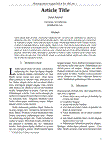| Summary: | Farm-reared shrimp require highly digestible protein with the correct balance of essential amino acids toachieve maximum growth. In shrimp feeds, much of the animal protein used has been derived from thefisheries of pelagic fish which is transformed into fish meal and fish oil. The problem is that while fisheriesproduction remains stagnant, aquaculture continues to grow at an annual rate of 8.8% since 1970. This workreports the results of three studies in which partial or complete replacement of fish meal was attempted inLitopenaeus vannamei diets. In study 1 (MET) 2-hydroxy-4-(methylthio)butanoic acid (HMTBa) was used tomeet L. vannamei methionine requirements as Anchovy fish meal levels dropped and higher inclusion ofsoybean meal, soy protein concentrate and fish oil was used in experimental diets. In study 2, performance ofjuveniles of L. vannamei fed on practical diets with increasing levels of Antarctic Krill meal, Euphausiasuperba, and decreasing levels of costly ingredients, namely fish meal (FML), fish oil (FO), cholesterol(CHL) and soybean lecithin (SL) was evaluated. In study 3, soybean protein concentrate (SPC) and soybeanoil (SBO) were used to replace fish meal and fish oil following Tacon and Metian’s (2008) prediction on theirmaximum inclusion levels in complete diets for penaeid shrimp for the next 15 years. Results have shown thatL. vannamei growth, body weight, survival, yield and FCR were supported by HMTBa supplementation when150 g/kg of fish meal was replaced by vegetable protein ingredients, namely soybean meal, at 50% and 100%.In study 2, Krill meal was also able to partially replace fish meal without unfavorable effects on shrimpgrowth performance. Study 3 indicated that there was no negative effect on L. vannamei performance whenfish meal was reduced from 12% to 8.5% using SPC as a substitute
|
|---|
